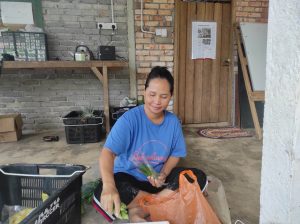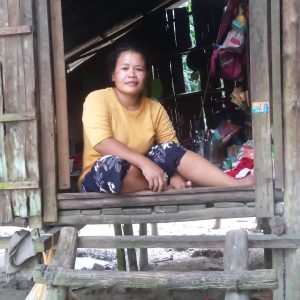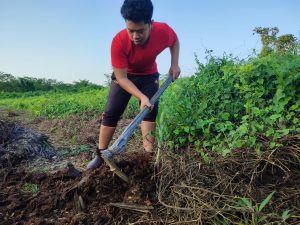The Orang Asli (OA) in Kampung Melai can tell when there is an impending flood. They call it “tagar” when thunder is booming and the forest floor is filled with fallen branches, twigs and leaves. When their instincts are wrong, the OA turn to local shamans or “puyang” to predict impending floods or natural disasters.

Even if the shaman can accurately pinpoint the start and end date of flooding, there is no telling how much damage it would leave behind. Linggi, a 65-year-old villager in Melai, shared that flash flooding has worsened over the years.
The flood in 2022 is worse than last year. – Linggi, 65
Behind The Rising Water

Flooding in Melai is more frequent and intense due to decisions made without taking into account environmental impacts. Perpetual and prolonged deforestation around the area has led to land erosion problems resulting in clogged drains that impede water flow.
There’s a dam construction in Kuala Chini and the drains are clogged with rubbish thrown by irresponsible individuals. – Linggi, 65
The floods that hit Malaysia In December 2021, were said to be the worst in 50 years. Unprecedented volumes of rainfall left areas on the west coast of Peninsular Malaysia under almost four metres of water and turned roads into rivers. The OA community were not exempted from the tragedy as over 14 OA settlements nationwide were submerged in flood water.
The villagers in Kampung Melai were one of them.
Lightning Strike Twice
Villagers in Melai face the flood with heavy hearts, aware of the devastating effects it will bring.
When floods occur, the Orang Asli are unable to do their daily activities and jobs such as tapping rubber, farming, and searching for food in the forest. Farmers are upset because their crops were affected by flood water. – Linggi, 65
Salasiah, 45, recalled that her father used to build a sampan or a water raft to prepare for floods. Those who live nearby the river banks would move to “Rumah Rakit” (raft houses) for safety.
The closure of main roads at the time of the flood would also isolate OA communities from others. This often leads to food insecurity in these communities.
We cannot go out to the store to buy food if the flood prolongs. We have to rely only on cassava and fish, which are among the only foods that are easily available during floods.– Linggi, 65

Since floods are a common occurrence, many families stock up before the waters rise. However, the food supply also dwindles over time when water fails to recede quickly leaving them isolated.
The preparations are sometimes not enough if the floods are prolonged. When this incident happened, we had to control our food intake (ikat perut) or ask for food from neighbours.– Salasiah, 45
Linggi recalled the time he dived into flood water to retrieve sunken cassava to feed his family.
I had to dive into the floodwater to feed my wife and children. I can’t leave them starving. – Linggi, 65
Help Came A Little Too Late
Isolated from the rest, OA communities have to rely on each other to survive yet another flood. While NGOs and government agencies focus on supporting other badly affected flood areas, the OA communities in Melai are always among the last to receive assistance.
There is also help given in terms of food from the outside or the government, but it is always given only after the flood season. – Linggi, 65
With weather and rainfall patterns becoming more unpredictable as a result of climate change and irresponsible development, devastating floods will continue. The OA community will have to rely on their personal instincts and spiritual predictions to prepare them for the next flood. In the meantime, the battle continues as they strive to earn a living while protecting the forest, their home.
SOURCES:
- The Vibes. (2022).Over 1,000 Orang Asli residents stranded by floods in Mersing since Sunday. Link


